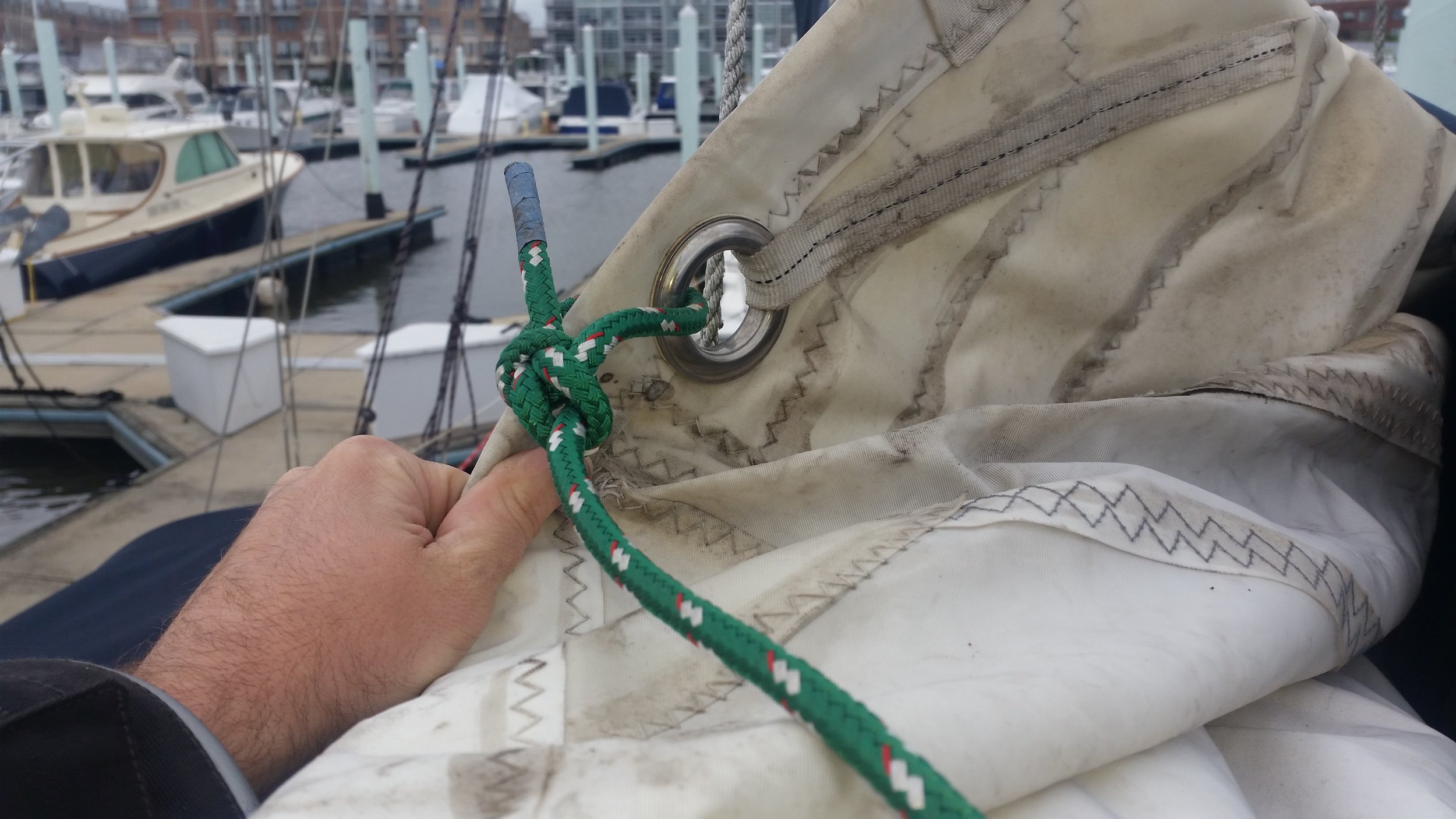It is very common to see the clew reef line simply tied to the cringle on the leech. This may look fine but it is actually incorrect.
The correct method is to tie the clew line to the boom, lead it up through the cringle, back down to the cheek block, and then forward along the boom.
You might be thinking, what is the harm, both methods pull the clew cringle back and down. The biggest fault here is the clew line is rather small for the task at hand because it is designed to be passed through the cringle. When you pass it through the cringle, it instantly creates a 2:1 system, where the force on the clew line is evenly distributed between both lines. This means that if you have 1000 pounds of force on the clew line, each section of the line is only subjected to 500 pounds.
If you simply tie the clew line to the cringle, all the force is put on that line. In our example, that means that the little line now needs to resist the full 1000 pounds when the designers were only calculating its lost at 500 pounds.
This is a very simple and common mistake, which is why you should inspect your own reef line setup to make sure you don't have a bowline tied to the clew cringle and instead pass it through the cringle and tied to the boom.













